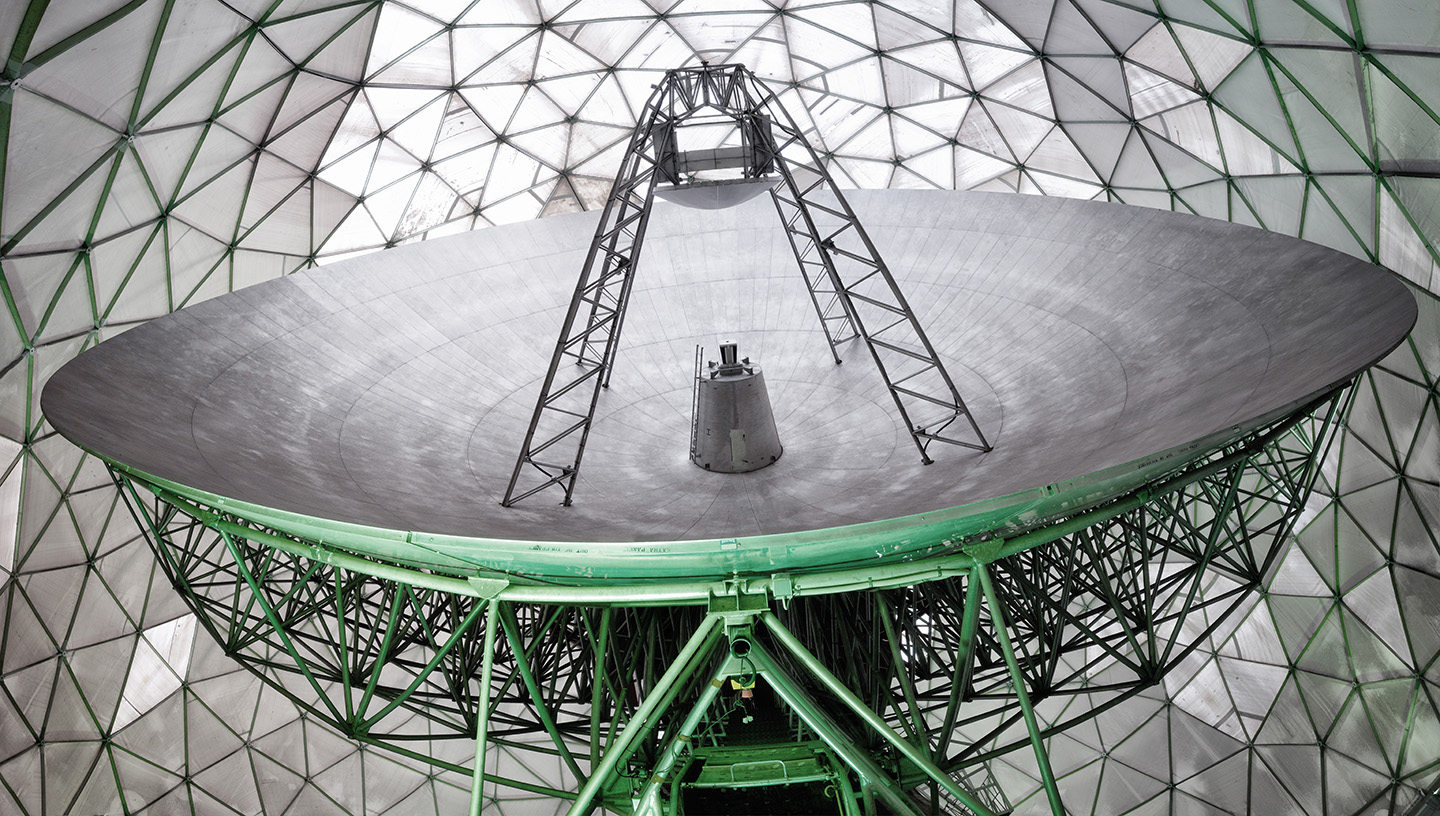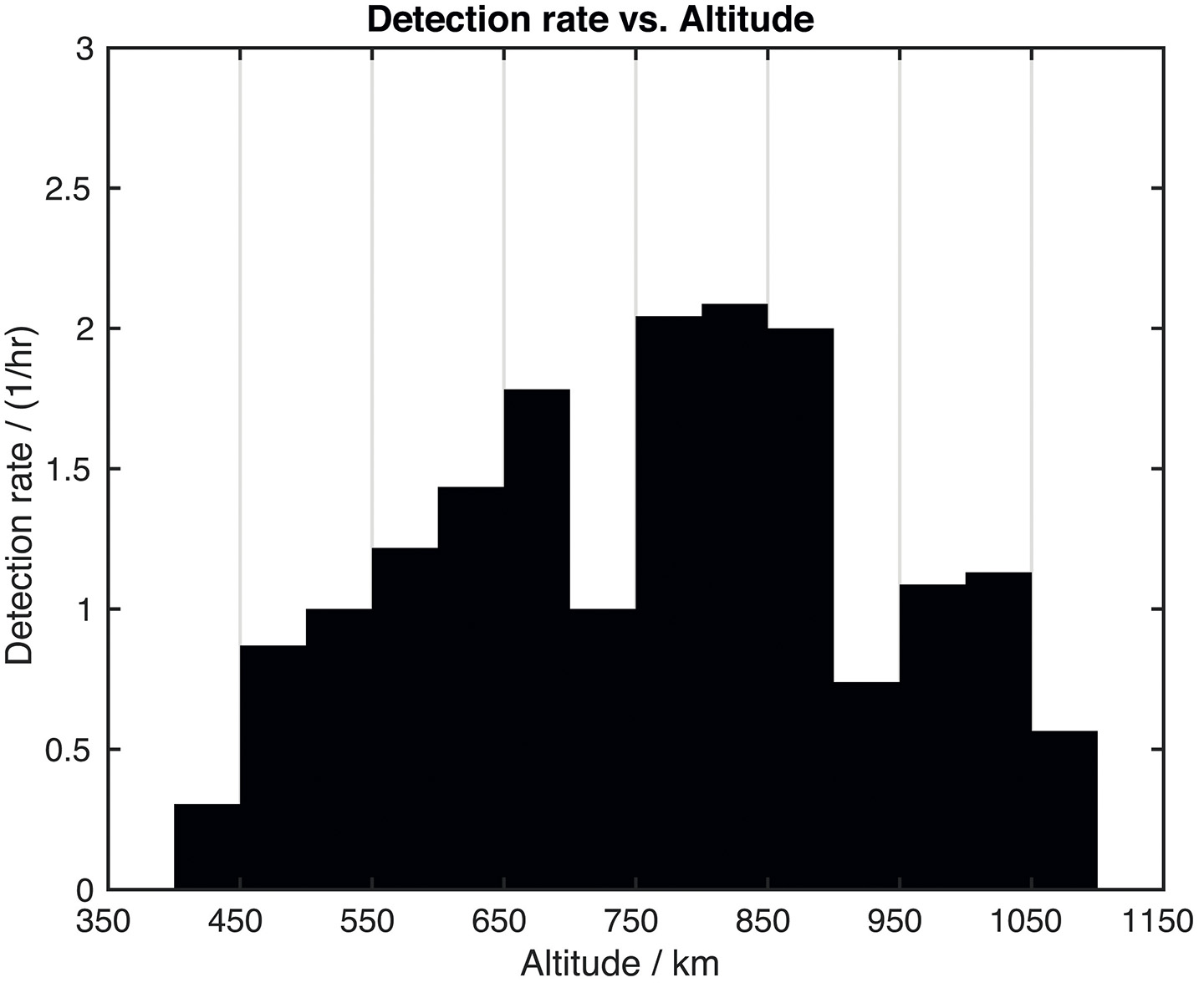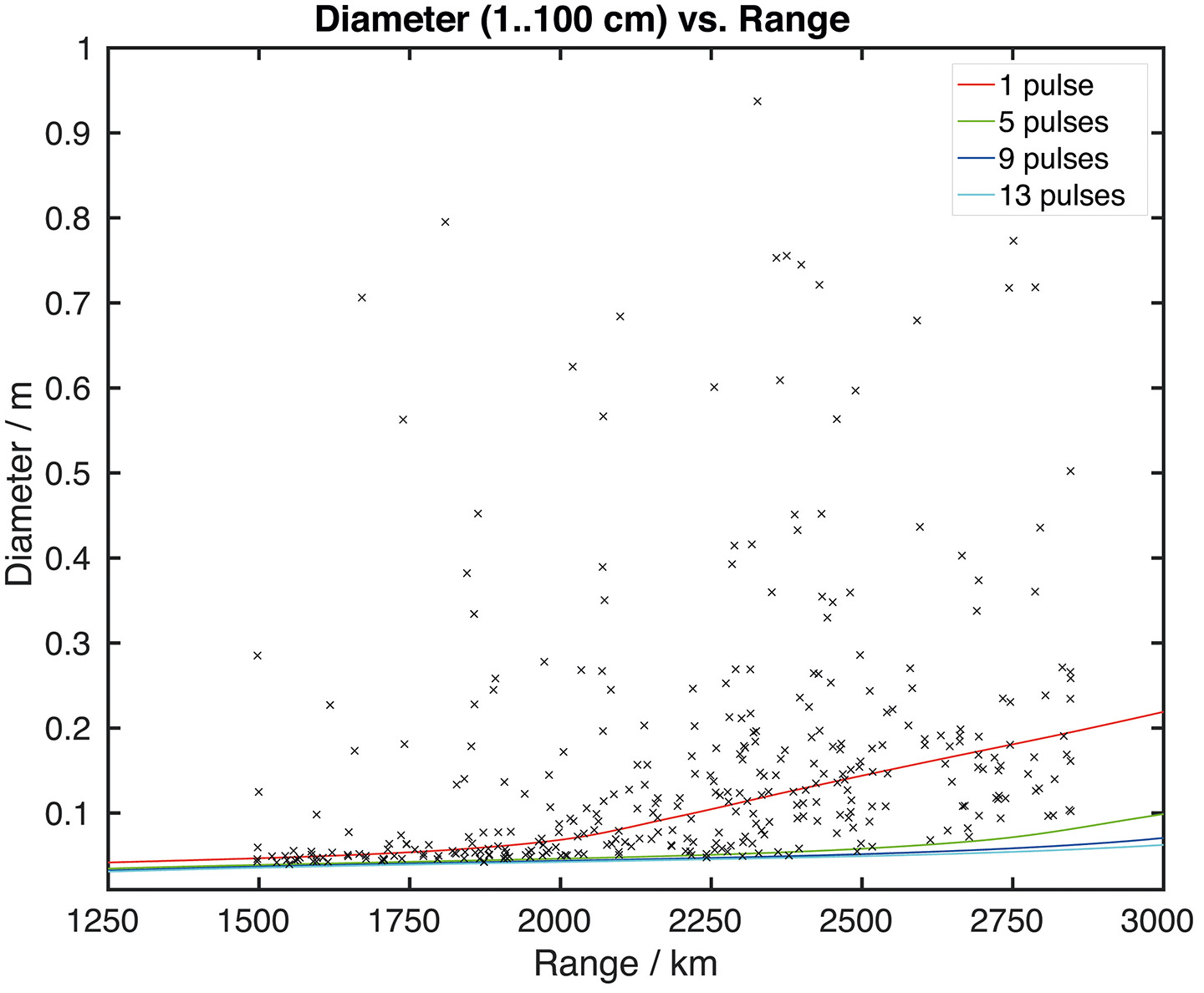Characterization of the small-size space debris population with TIRA



Small objects just a few centimeters in size can damage or even completely destroy satellites. The space observation radar TIRA measures the population of small particle space debris on a regular basis. The results obtained from the radar data are used to calibrate and validate models of the space debris environment.
The number of space debris has grown exponentially since the start of space exploration back in 1957. Debris from collisions and explosions, rocket bodies, disused satellites and other space objects is orbiting the Earth and poses a risk for active space systems. Due to the high relative speeds, a collision with an object just one centimeter in size could prove fatal for an active satellite.
Currently, objects larger than about 10 centimeters in size can be detected, tracked and catalogued from the Earth using radar systems and telescopes. Smaller objects and objects in highly elliptical orbits are, however, much more difficult to detect and track. These objects can not be catalogued at present, i.e. the location of these objects, which are potentially very dangerous for satellites, at a particular time is not known. Hence, information relating, at least, to the distribution of these objects in space is very important.
Since its completion, the space observation radar TIRA has been the leading system in Europe for the observation of space objects. Due to its extremely high sensitivity, TIRA can measure the weak backscatter signals of the smallest particles of space debris. In this way, small objects just two centimeters in size can be detected at a distance of 1,000 kilometers. This high sensitivity is achieved, in part, through the large gain of the highly dynamic 34-meter antenna.
Due to this capability, TIRA and Fraunhofer FHR have participated in regular international measurement campaigns (the so-called beam-park experiments (BPE)) to measure the small-size space debris population and record its statistical distribution. These measurement campaigns are coordinated by the IADC (Inter-Agency Space Debris Coordination Committee) and take place every two years usually. It is important that such measurement campaigns are carried out on a regular basis to ensure that changes in the small-size space debris population can be monitored. The space population in Low Earth Orbit (LEO) is particularly dynamic: debris particles are created through explosions and collisions. New satellites and other pieces of space debris (e.g. rocket upper stages) enter space and other objects disappear from space due to atmospheric drag and re-entry into the Earth's atmosphere. The results of these sample observations are important sampling points for space debris environment models, such as the ESA's MASTER model (Meteoroid and Space-Debris Terrestrial Environment Reference) and allow the calibration and validation of these models.
During a BPE, the antenna of a participating radar sensor is parked in a selected direction and radar data is recorded over a period of 24 hours. The rotation of the Earth ensures that the radar has observed a closed volume at the end of the 24-hour period. Different orbital regions can be recorded, depending on the antenna's line of sight. The antenna is, for example, parked in an easterly direction for an east-staring BPE. In the case of a south-staring BPE, the antenna faces south with a low elevation angle. With this geometry, it is possible to investigate the debris population in orbits with a low inclination. The radar data provides a lot of important information about the detected objects. The size of an object can, for example, be estimated on the basis of the radar cross section. The orbital height and orbital inclination can also be estimated under the assumption that the orbit is circular.
A south-staring BPE was carried out for the first time in December 2015. Three American radar systems also participated in this IADC measurement campaign: the HUSIR radar (Haystack Ultrawideband Satellite Imaging Radar), the Cobra Dane Radar and the Goldstone Radar. A joint report on the recorded space particles and their distribution over the estimated orbital parameters was compiled and is currently being evaluated for the calibration and validation of space debris environment models. Figures 2 and 3 show some results achieved with TIRA. In Figure 2, the detection rate is shown according to the orbital height of the detected space debris. The estimated size of the particles over distance is shown in Figure 3. This project was funded by the ESA/ESOC.